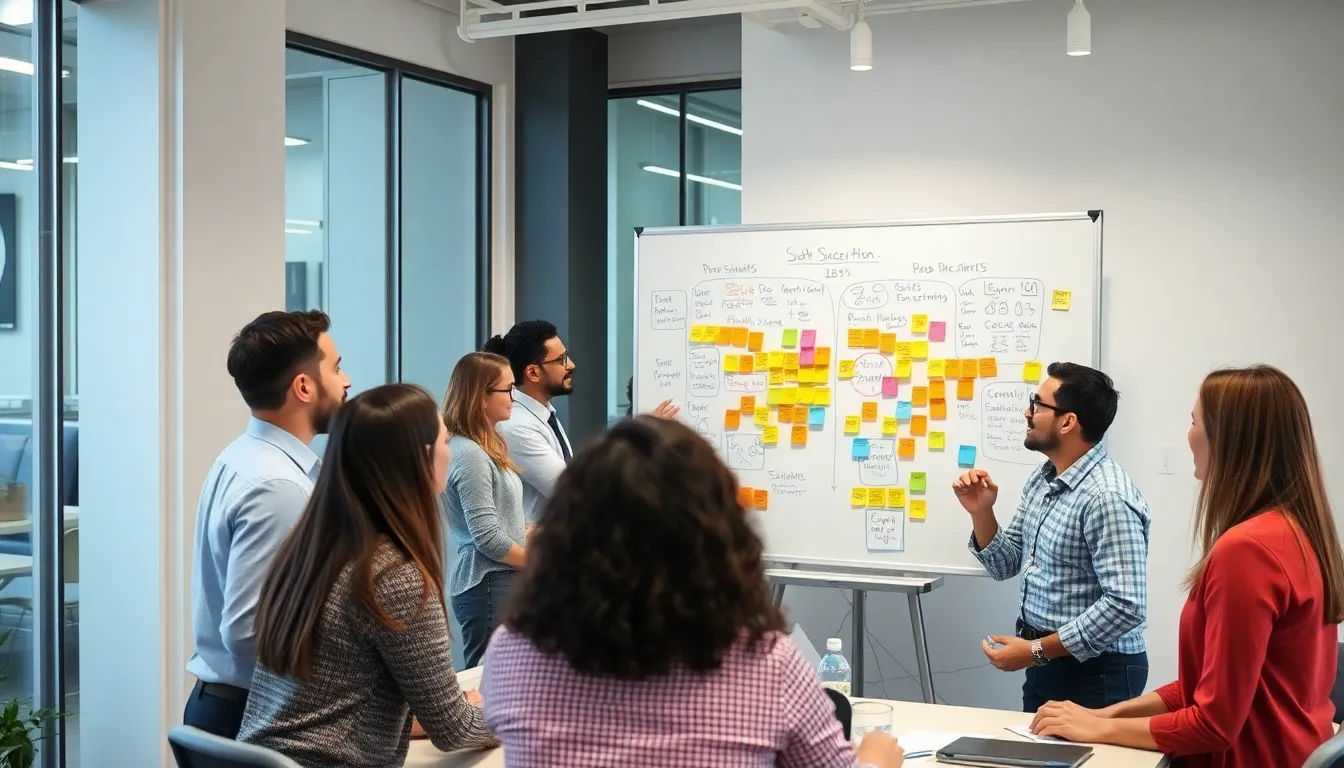Table of Contents
ToggleIn a rapidly changing world, conceptual innovation stands out as a driving force behind transformative ideas and solutions. It goes beyond mere product development, reshaping the very frameworks within which industries operate. By challenging conventional wisdom and exploring new paradigms, organizations can unlock unprecedented opportunities and foster sustainable growth.
As businesses strive to stay ahead of the curve, understanding the essence of conceptual innovation becomes crucial. This approach encourages creative thinking and collaboration, paving the way for breakthroughs that can redefine markets. Embracing this innovative mindset not only enhances competitive advantage but also cultivates a culture of continuous improvement.
Understanding Conceptual Innovation
Conceptual innovation serves as a cornerstone for transformative ideas and solutions in dynamic environments. It shifts paradigms, empowering organizations to rethink their strategies and challenge established norms.
Definition and Importance
Conceptual innovation refers to the generation of new ideas that significantly reshape understanding or practices within an industry. This innovation extends beyond mere improvement of existing products or services; it involves reimagining frameworks and creating fundamental change. By fostering conceptual innovation, organizations access fresh opportunities for growth and competitive advantages. Companies can achieve greater adaptability through enhanced creativity and collaboration, ultimately supporting long-term sustainability.
Historical Context
Historically, conceptual innovation has emerged during periods of significant societal change. The Industrial Revolution, for example, sparked numerous conceptual breakthroughs, such as mass production and assembly line techniques. Similarly, the digital age introduced concepts like cloud computing and online collaboration tools, revolutionizing the way businesses operate. Analyzing these historical examples demonstrates how conceptual innovation acts as a catalyst for transformation and highlights the ongoing necessity for adaptable thinking in today’s fast-paced world.
Key Components of Conceptual Innovation

Conceptual innovation relies on several key components that drive transformative change within industries. Understanding these components allows organizations to harness the power of innovative thinking.
Creativity and Originality
Creativity and originality represent the foundation of conceptual innovation. They involve generating unique ideas that stand apart from existing concepts. Organizations can cultivate creativity by encouraging diverse thinking, leveraging cross-disciplinary collaboration, and providing an environment that supports experimentation. Tools such as brainstorming sessions, innovation workshops, and idea incubators play significant roles in stimulating creative thought. For example, companies like Google implement “20% time,” allowing employees to spend time on personal projects, leading to innovative solutions like Gmail and Google News.
Problem-Solving Approaches
Problem-solving approaches underpin the application of conceptual innovation. Effective problem-solving involves analyzing challenges from multiple perspectives and developing innovative strategies to address them. Techniques such as design thinking and systems thinking enhance problem-solving capabilities. Design thinking focuses on understanding users’ needs and iteratively testing solutions, while systems thinking examines the interplay between various elements in a problem. Organizations that adopt these approaches often achieve breakthrough solutions that redefine industry standards. For instance, IBM’s design thinking practice has resulted in more user-centric software products, demonstrating the potential of innovative problem-solving methodologies.
Strategies for Fostering Conceptual Innovation
Organizations can enhance conceptual innovation by implementing targeted strategies. These approaches foster an environment conducive to creativity and transformative ideas.
Encouraging Diverse Thinking
Encouraging diverse thinking involves bringing together individuals with different backgrounds, experiences, and perspectives. This diversity promotes the exchange of unique ideas, leading to innovative solutions. Organizations can implement cross-functional teams, ensuring members possess varying skill sets and viewpoints. Conducting regular brainstorming sessions helps generate a multitude of ideas. Additionally, incorporating feedback from different levels within the organization enhances idea robustness. Establishing mentorship programs can further support diverse thinking, allowing individuals to learn from varied experiences and perspectives.
Implementing Collaborative Practices
Implementing collaborative practices fosters a culture of teamwork essential for conceptual innovation. Organizations can utilize collaborative tools, such as project management software and messaging platforms, to streamline communication. Hosting regular workshops and innovation labs encourages employees to collaborate on creative projects, stimulating new ideas. Creating interdisciplinary teams allows for the integration of multiple perspectives, enriching the innovation process. Additionally, establishing a feedback-rich environment supports open dialogue, where employees feel valued and motivated to contribute their ideas. By prioritizing collaboration, organizations enhance their ability to innovate conceptually, driving significant change in their industries.
Case Studies in Conceptual Innovation
Conceptual innovation manifests through various success stories and lessons learned from failures across industries. These case studies highlight how transformative ideas reshape businesses and demonstrate the importance of resilience in the innovation process.
Success Stories
- Tesla, Inc.
Tesla disrupted the automotive industry through electric vehicle (EV) innovation. Their focus on sustainability and performance transformed consumer expectations. By integrating cutting-edge technology and designing an appealing user experience, Tesla established itself as a leader in the transition to renewable energy.
- Airbnb
Airbnb revolutionized the hospitality sector by enabling homeowners to rent out their spaces. This shift in accommodation models significantly impacted traditional hotels, fostering a new marketplace. Through community building and user trust, Airbnb developed a robust platform that reshaped travel experiences.
- Netflix
Netflix transitioned from DVD rentals to streaming, fundamentally changing media consumption. By leveraging data analytics and personalized recommendations, it redefined entertainment, moving towards original content production. This approach allowed Netflix to dominate the market through innovation in content delivery and viewer engagement.
Lessons Learned from Failures
- Blockbuster
Blockbuster’s failure stems from its reluctance to embrace the digital shift. Maintaining traditional rental models and ignoring the rise of streaming services led to significant losses. This case exemplifies the importance of adaptability in a rapidly evolving market.
- Kodak
Kodak’s decline highlights the consequences of failing to pivot from its film-centric business model. Despite pioneering digital photography, Kodak did not capitalize on its innovation, allowing competitors to take the lead. This failure underscores the need for continuous reinvention in response to technological advancements.
- MySpace
MySpace’s rise and fall in social media illustrates the impact of innovation stagnation. Once a leading platform, it struggled to adapt to user preference changes and competition from Facebook. MySpace serves as a reminder of the necessity to continually evolve to maintain relevance.
Conceptual innovation stands as a vital force in shaping the future of industries. By embracing new ideas and challenging the status quo, organizations can navigate the complexities of a rapidly evolving landscape. This innovative mindset not only fosters growth but also cultivates a culture of adaptability and resilience.
As demonstrated by various case studies, success hinges on the ability to think creatively and collaborate effectively. Organizations that prioritize diverse perspectives and encourage experimentation are better positioned to redefine their industries. The journey of conceptual innovation is ongoing and requires a commitment to continuous improvement and transformative thinking.




